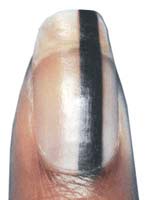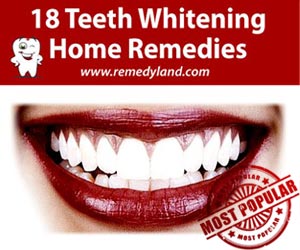What is melanonychia?
Melanonychia is brown or black pigmentation of the nail plate from melanin deposition. Melanonychia usually presents like pigmented strap lined up lengthwise along the nail, so this appearance is called longitudinal melanonychia. Melanonychia has an effect on females and males equally.
Commonly, melanonychia is a bit more typical in mature people. In kids, melanonychia is usually a result of melanocytic nevi. Subungual melanoma is extremely uncommon in kids. Thumbs and great toes were the most typical locations. The pigmentation can occur as one color or transform from one tone to another. Narrow, normal or unusual lines occasionally appear. Melanonychia signs may additionally occur as blue to brown dots of dried out blood beneath the nail plate.
Melanonychia causes
Melanonychia may appear from a number of causes. Occasionally ordinary trauma to the nail appears identical. The illness itself could be caused by wrong diet, a variety of medications, vitamin deficiencies, or malignancies. Sometimes endocrine cancer can lead to this. Occasionally, bacterial infections for example fungal infections could cause an identical physical appearance. But the most important consideration is if the longitudinal melanonychia refers to a skin melanoma under the nail bed. This is named as subungual melanoma.
Unfortunately, people with subungual melanoma in many cases are in the beginning misdiagnosed, and because of diagnostic waiting time of approximately two years, malignancy of the nail plate has a bad medical prognosis.
Possessing a comprehensive understanding of the different causes of melanonychia and with the use of a methodical approach when examining nail pigmentation could help prevent misdiagnosis and as a result improve medical prognosis. Negative effects related to chemotherapy, and radiation, could potentially cause melanonychia.
The pigmentation usually goes away as soon as therapy ends or medicinal drugs are not needed. Abnormally massive accumulation of melanin typically appear in the nails of individuals which have dark epidermis. Researches show that 75% of people of African descent encounter melanonychia. The disorder can also happen in individuals of Asian heritage 15% to 20 % of the time. Just 1 % of individuals with Caucasian ancestry encounter this skin disease.
Melanonychia symptoms
Specific fundamental patterns can be found. Dermatologist take into account the number of fingers affected, because melanonychia on several fingers signifies that the melanonychia come from cancer. The size of the pigmentation is essential. In case the width is larger at the start of the nail plate close to the cuticle then towards the end close to the fingertips, this indicates that the lesion is changing and could be an indicator of malignancy. The unique color is very important, since melanomas commonly have a number of color variations, such as abnormal streaks in the color, since regular melanonychia are usually a more solid color.
Additionally, a strap of pigmentation which is extremely dark and wide might also imply that a melanoma exists. Pigmentation on the cuticle together with nail folds could also be a indication of malignancy. Nail dystrophy is uncommon in racial melanonychia however typical in traumatic or fungal melanonychia. Racial melanonychia typically happens in three to five nails or to a less significant degree in one nail or perhaps all ten toenails. Traumatic melanonychia generally impacts one nail. Fungal melanonychia is generally found in three to five nails.
Melanonychia caused from fungal infection
Fungal melanonychia have some manifestations like racial melanonychia, for example the different tones of brown color, width under four millimeters and frequently take a part in multiple nails. Nail dystrophy appears to be the primary sign to make a distinction between these two varieties of melanonychia. Nail dystrophy is frequent in fungal melanonychia and uncommon in racial longitudinal melanonychia.
Nutritional longitudinal melanonychia
Pigmentation of the nails sometimes happens because of vitamin B12 deficiency. The pigmentation has a tendency to have a bluish to black shade. Generally, diagnoses is depending on laboratory evaluation. This form of nail pigmentation is entirely reversible after vitamin B12 management.
Traumatic melanonychia
In traumatic melanonychia, recurring trauma encourage nail matrix to generate additional pigment. Recurring trauma for example nail biting could stimulate nail pigmentation. We primarily find this to be a consequence of inappropriate footwear and extremely long second toe. It primarily occurs on the toes which is usually related to foot deformities, improper shoes or both of them. This form of nail pigmentation could slowly clear out as soon as the recurring trauma disappears.
Melanonychia connected to inflammatory nail conditions
The pigmentation tend to be delicate at first and turn out to be obviously clinically evident when the inflammatory process gets worse. It usually is related to nail scarring and deviations of the surface area of the nail plate.
Melanonychia as a result of drug treatments
A few drug treatments might stimulate nail matrix melanocytes to create melanin, producing a band of melanonychia varying in shade from light brown to black color. In drug caused melanonychia, a few nails are typically impacted with several straps. Drug caused melanonychia most typically presents itself four to eight weeks after drug usage. Pigmentation is generally reversible within a matter of weeks however can continue to persist for several months.
Melanonychia treatment and prognosis
Melanonychia is treatable. But, it very much relies upon what is the reason for the melanonychia. As pointed out above, many of these problems are really treatable. A few are extremely serious, while some are trivial and need no treatment.
Dermatologist can check out the lesion and check if you have any additional signs and symptoms that could be relevant. Sometimes a biopsy of the epidermis is required for additional analysis. When carrying out a biopsy, the source of the pigment, which usually can be found in the nail matrix, needs to be sampled in its entirety. A positive malignant medical diagnosis typically demands that the impacted region go through surgical removal. The morbidity and mortality of melanonychia relies upon the underlying source.
You may also like:
- 15 Brittle Nails Home Remedies and Onychorrhexis Treatments
Brittle nails or onychorrhexis caused by various factors can be successfully treated and cured with home remedies. Learn how!!!
- Onychomadesis Causes and Treatment for Children and Grown Ups
Onychomadesis is the total loss of the nail without pain, onychomadesis is a sign of more difficult conditions, some people have recurrence of onychomadesis
- Ingrown Toenail or Onychocryptosis Treatment, Surgery, Infection
What is an ingrown toenail, What causes Onychocryptosis, How to fix an ingrown toenail, Ingrown toenail home treatment, Onychocryptosis infection remedies.



